By – James M. Katz, BA
In today’s complex healthcare landscape, case management plays a crucial role in optimizing patient care and resource utilization. This approach has an impact on various aspects of healthcare delivery, from improving health benefits to enhancing care coordination. As healthcare organizations strive to balance quality care with cost-effectiveness, case management has become an essential tool to manage utilization and ensure patients receive the right care at the right time. Case management and utilization review are essential in healthcare. They help ensure patients get the right care while keeping costs under control. This article explores the basics of utilization review, the role of case managers, data analysis, technology, patient outcomes, and the challenges faced in this field.
Case management systems are evolving to meet the growing demands of the healthcare industry. These tools help utilization managers and care coordinators to streamline processes, monitor patient progress, and make data-driven decisions. From case management nursing to disease management, the applications of this approach are wide-ranging. This article explores the role of case management in effective utilization strategies, examining its definition, implementation, and the use of case management software to improve healthcare outcomes and efficiency.
Key Takeaways
- Utilization review ensures patients receive necessary and appropriate care, managing healthcare costs effectively.
- Case managers play a crucial role in coordinating with healthcare teams and communicating with patients and families.
- Data analysis in utilization review helps identify trends and improve healthcare policies and protocols.
- Technological advancements, like electronic health records and innovative case management tools, are transforming utilization review.
- Effective utilization review and case management lead to better patient outcomes and efficient use of healthcare resources.
Fundamentals of Utilization Review in Healthcare
Definition and Scope
Utilization Review (UR) is a key process in healthcare that ensures patients get the right medical care while keeping costs and resources in check. It involves checking if the medical services, procedures, and facilities used are necessary, appropriate, and efficient. UR is not just a regulatory requirement but also a strategic tool for healthcare providers to maintain high standards of patient care and financial responsibility. The scope of UR includes everything from getting approval for inpatient and outpatient services to ongoing patient chart reviews and validating the level of care. Tools like InterQual or MCG criteria are used to make sure patients are placed at the right level of care. This process follows the Utilization Review Plan, which meets the CMS Conditions of Participation for Utilization Review.
Key Components and Processes
The UR process is dynamic and changes with new regulations and medical advancements. It requires healthcare professionals to keep learning and adapting. Precertification, also known as preauthorization, is a crucial step in UR. It ensures that inpatient stays and outpatient services are covered by a patient’s health plan before they are provided. This involves using nationally accepted admission criteria and medical necessity screening tools to validate the requested services.
Regulatory Compliance
UR professionals need to know the rules and standards set by regulatory bodies. This knowledge helps them follow protocols and spot patterns in how resources are used. By sticking to the UR process as outlined in the Utilization Review Plan and following CMS Conditions of Participation, healthcare organizations can stay compliant while improving patient outcomes.
The Role of Case Managers in Utilization Review
Responsibilities and Duties
Case managers play a crucial role in utilization review by ensuring that patients receive the appropriate level of care. They review patient charts, validate the necessity of treatments, and use medical necessity screening tools like InterQual or MCG criteria. Their main goal is to make sure that healthcare resources are used efficiently and effectively. This involves securing authorizations for clinical services and adhering to regulatory requirements.
Collaboration with Healthcare Teams
Effective utilization review requires case managers to work closely with various healthcare teams. They act as liaisons between doctors, nurses, and other medical staff to coordinate patient care. This collaboration helps in streamlining the care process, avoiding unnecessary delays, and ensuring that patients receive timely and appropriate treatments.
Understanding Case Management in Healthcare
Case management in healthcare is a collaborative process that connects patients with health care providers, resources, and services. It aims to ensure that patients receive the best possible care in the most cost-effective manner. This approach involves assessing, planning, implementing, coordinating, monitoring, and evaluating the options and services required to meet an individual’s health needs.
Definition and Core Components
Case management is a specialty practice within the health and human services profession. It is not a standalone profession but rather a cross-disciplinary and interdependent specialty practice. A case manager, typically a certified medical professional, works with clients to coordinate appointments, treatment plans, and help patients achieve their optimum level of health.
The case management process consists of five core components:
1. Intake: The initial meeting between a case manager and a new client, where demographic information is gathered, immediate needs are identified, and trust is established.
2. Needs Assessment: A deeper exploration of the client’s challenges, goals, and barriers to success.
3. Risk Evaluation: Determining if a client’s case is high-risk, moderate-risk, or low-risk, which factors into their treatment plan.
4. Service Planning: Establishing specific goals and actionable steps for clients, including outputs, outcomes, and metrics for success assessment.
5. Monitoring and Evaluation: Continuous assessment of progress towards goals and identification of obstacles.
Goals and Objectives of Case Management
The primary goals of case management are focused on improving the client’s clinical, functional, emotional, and psychosocial status. Case management aims to:
1. Promote wellness and autonomy through advocacy, communication, and education.
2. Identify and facilitate appropriate service resources.
3. Improve clients’ health and promote wellness through advocacy, communication, education, and service facilitation.
4. Achieve quality outcomes for clients while committing to the appropriate use of resources.
5. Coordinate care that is safe, timely, effective, efficient, equitable, and client-centered.
Key Stakeholders Involved
Case management involves various stakeholders, each playing a crucial role in the process:
1. Patients and Their Support Systems: The primary focus of case management, actively involved in their care plans.
2. Healthcare Providers: Including doctors, nurses, and specialists who provide direct care.
3. Case Managers: Professionals from various backgrounds such as nursing, social work, rehabilitation counseling, and mental health.
4. Healthcare Organizations: Including hospitals, clinics, and community health centers.
5. Payers: Insurance companies and government programs that fund healthcare services.
6. Government Agencies: Involved in policy-making and regulation of healthcare services.
7. Community Organizations: Providing additional support and resources for patients.
Stakeholder involvement is critical throughout the case management process. Their support is vital as they provide funding, strategic direction, and solutions to the overall healthcare industry. Effective communication and collaboration among all stakeholders are essential to achieve optimum value and desirable outcomes.
To ensure success, case management programs should involve stakeholders during each stage, from program design to evaluation. This involvement leads to early buy-in, successful program design, and establishment of long-term support. Regular communication with stakeholders and sharing program outcomes early and often have proven effective in maintaining stakeholder support and ensuring the program’s success.
The Intersection of Case Management and Utilization Management
Defining Utilization Management
Utilization Management (UM), initially referred to as Utilization Review (UR), is a well-recognized component of cost management in healthcare service delivery and payment arenas. It involves techniques and policies for evaluating the necessity of medical treatments and services on a case-by-case basis. The UM process includes interventions that take place before, during, and after the clinical encounter.
There are three types of UM reviews:
1. Prospective Review: Occurs before treatment starts, evaluating the procedure’s necessity and ruling out duplicate treatments.
2. Concurrent Review: Takes place while the patient is receiving care, monitoring progress and resource utilization.
3. Retrospective Review: Performed after treatment completion, focusing on the effectiveness and appropriateness of the treatment.
The primary goals of UM are to lower costs, improve patient care, and reduce claim denials. Nurses and clinical pharmacists often conduct these UM activities, with physicians involved in review decisions and denials.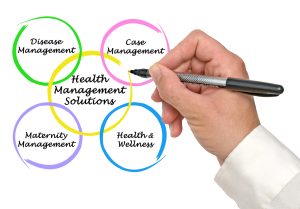
How Case Management Supports UM Goals
Case management plays a crucial role in supporting UM goals by identifying patients who require specialized attention, optimizing resource allocation, and improving patient outcomes. The integration of UM within case management significantly influences both patient outcomes and the allocation of healthcare resources.
Key ways case management supports UM goals include:
1. Patient Identification: Case management services pinpoint patients with complex conditions or those who have had extended inpatient stays.
2. Resource Optimization: By assessing medical appropriateness and cost-effectiveness of services, care managers can optimize the use of hospital beds, staff, and other resources.
3. Authorization Securing: Effective collaboration between case management and UM is pivotal in securing authorization for clinical services, streamlining the patient care continuum.
4. Level of Care Validation: The Utilization Review Case Manager (UR CM) validates patient care levels using nationally accepted criteria and medical necessity screening tools.
Collaborative Approaches for Optimal Outcomes
The intersection of case management and UM requires a collaborative approach to achieve optimal outcomes. This collaboration is essential due to the significant impact a small percentage of patients can have on overall healthcare costs. Studies have shown that approximately 10% of patients account for about 70% of all healthcare expenditures.
To address this, high-cost case management focuses on the 1% to 7% of individuals who may account for 30% to 60% of a group’s total costs. This approach involves assessing a person’s needs and personal circumstances, then planning, arranging, and coordinating recommended services.
Collaborative approaches for optimal outcomes include:
1. Interdisciplinary Teamwork: Nurses, clinical pharmacists, and physicians work closely together after UM reviews to improve patient outcomes.
2. Integrated Systems: Case management software applications should provide easy access to information, enhanced documentation, and improved accountability.
3. Evidence-Based Decision Making: Utilizing evidence-based, decision support criteria from sources like Milliman and InterQual to provide objective criteria for determining appropriate care.
4. Holistic Patient Care: Considering not only healthcare needs but also psychosocial factors and community resources to optimize outcomes.
5. Continuous Monitoring and Evaluation: Regularly assessing the effectiveness of interventions and adjusting care plans as needed.
By integrating UM with case management, healthcare providers can identify patients requiring specialized attention, optimize resource allocation, and improve patient outcomes. This synergy is essential for both patient outcomes and the efficient use of healthcare resources, ensuring that patients receive the right level of care at the right time.
Case Management Strategies for Effective Utilization
Comprehensive Patient Assessment
The foundation of effective case management lies in a thorough patient assessment. This process involves gathering detailed information about the patient’s health history, current needs, and future goals. A comprehensive assessment allows healthcare workers to gain a better understanding of the patient’s needs while revealing concerns that might impede effective diagnosis or treatment.
The assessment typically includes:
1. Collecting vital signs
2. Reviewing past conditions and surgeries
3. Updating medication history
4. Discussing family medical conditions
5. Evaluating lifestyle factors such as nutrition, exercise, and sleep habits
6. Assessing mental health status
Mental status assessments are particularly important as they provide insight into the patient’s cognitive and emotional health. These may include evaluations of mood, affect, degree of arousal, and more specialized tests such as the Mini Mental State Examination (MMSE) or Beck’s Depression Inventory.
Care Planning and Coordination
Following the assessment, case managers develop a comprehensive care plan tailored to the patient’s specific needs. This plan serves as a roadmap for the patient to navigate through the healthcare system. The care planning process involves:
1. Defining treatment goals
2. Identifying tasks and actions needed to achieve these goals
3. Determining access to specific services and supports
4. Setting targeted outcomes
Care coordination teams play a pivotal role in implementing these plans, organizing personnel and resources necessary for all patient care activities. The goal is to enhance patient satisfaction and safety while managing the length of stay effectively.
A key aspect of care planning is the involvement of patients in setting their own goals. This approach empowers patients, increases their motivation, and can have a positive impact on patient satisfaction and adherence to treatment plans.
Ongoing Monitoring and Evaluation
Continuous monitoring and evaluation are crucial components of effective case management. This stage involves:
1. Regular follow-up assessments
2. Adapting care plans based on evolving needs
3. Identifying and responding to issues in a timely manner
4. Evaluating the effectiveness of case plans and support plans
Monitoring activities may include in-person visits, remote follow-ups via phone calls, and feedback from community-based service providers. This ongoing process allows case managers to identify potential issues early, minimizing the likelihood of risks escalating or placement breakdowns occurring.
Case managers also play a crucial role in facilitating smooth transitions across the healthcare continuum. This may involve preparing clients to move home or transfer to another facility for further care. Throughout this process, case managers continue to implement and adapt care plans, ensuring ongoing safety and wellbeing of patients.
Effective case management strategies for utilization control require a collaborative approach. This involves working closely with interdisciplinary teams, including nurses, clinical pharmacists, physicians, and other healthcare professionals. By integrating these strategies, healthcare providers can optimize resource allocation, improve patient outcomes, and ensure that patients receive the right level of care at the right time.
Leveraging Technology in Case Management
In the modern healthcare landscape, technology plays a pivotal role in enhancing case management strategies and improving patient outcomes. By leveraging advanced tools and platforms, healthcare providers can streamline processes, make data-driven decisions, and provide more personalized care. This section explores three key technological advancements that have revolutionized case management: Electronic Health Records Integration, Care Coordination Platforms, and Data Analytics for Decision Support.
Electronic Health Records Integration
Electronic Health Records (EHR) integration has become a cornerstone of effective case management. This technology allows for the seamless sharing of patient information across various healthcare providers, leading to more efficient diagnosis and treatment. EHR integration enables quick access to medical and dental records, making onboarding faster and more effective. It also facilitates the transfer of crucial patient data, including demographics, medical history, medications, allergies, and lab results.
One of the primary benefits of EHR integration is its ability to foster a more engaged doctor-patient relationship. By providing relevant information, alerts, and guidance at the point of care, EHR systems increase patient loyalty and improve overall care quality. Moreover, this integration promotes a safer and more reliable way of writing prescriptions, reducing the risk of medication errors.
EHR integration also streamlines administrative functions, allowing healthcare professionals to focus more on patient care and practice growth. This efficiency is particularly crucial in today’s healthcare environment, where global predictive analytics revenues are expected to reach $22 billion by 2026.
Care Coordination Platforms
Care coordination platforms have emerged as powerful tools to enhance communication and collaboration among healthcare providers. These platforms enable the creation of interoperable workflows within and across different systems, helping post-acute care providers, health systems, and payers deliver coordinated operational and clinical protocols across various care settings.
One notable example is the Carport® platform, powered by Well Sky, which has expanded its reach across the patient care journey. This network includes more than 2,000 hospitals and 130,000 post-acute and community providers, capturing thirteen million discharges from hospitals to post-acute settings in the U.S. each year.
Care coordination platforms offer several advantages:
1. Improved patient tracking: These systems allow providers to follow patients to the next level of care and monitor them after discharge.
2. Comprehensive patient view: At a glance, providers can understand a patient’s past medical history, view clinical and non-clinical risk factors, and access predictive analytics that illustrate the patient’s future care trajectory.
3. Cross-sector partnerships: Using interoperable care coordination software, clinical providers can create closed-loop referrals, facilitating whole-person care.
Data Analytics for Decision Support
The integration of data analytics in case management has transformed decision-making processes in healthcare. Advanced analytical techniques can be applied to large datasets from thousands of patients, identifying clusters and correlations between datasets, as well as developing predictive models using data mining techniques.
Data analytics in healthcare offers several benefits:
1. Personalized medicine: Big Data Analytics can help identify optimal patient-specific treatments, potentially improving life standards, reducing waste of healthcare resources, and saving costs.
2. Predictive analysis: Real-time analysis becomes possible, enabling medical staff to initiate early treatments and reduce potential morbidity and mortality.
3. Improved patient outcomes: Data analytics has successfully identified effective patient treatments, estimated patients’ disease risk, and helped clinical staff prevent patient deterioration.
4. Resource optimization: Hospitals can use modeling to improve insurance reimbursements, patient payments, and staffing levels.
The implementation of big data analytics by healthcare organizations is expected to bring numerous benefits in the coming years. These include lowering healthcare costs, better diagnosis and prediction of diseases, improving patient care, developing protocols to prevent re-hospitalization, optimizing staff and equipment, forecasting the need for hospital beds and operating rooms, and improving the drug supply chain.
By leveraging these technological advancements, case managers can significantly enhance their ability to provide high-quality, coordinated care while optimizing resource utilization and improving overall patient outcomes.
Measuring the Impact of Case Management on Utilization
Measuring the impact of case management on healthcare utilization is crucial for policymaking and clinical decision-making in a managed care environment. Traditionally, outcome data have described this impact in terms of services used and money spent. As public and private payers increasingly demand services linked to specific outcomes, the need for comprehensive evaluation has become more pressing.
Key Performance Indicators
To effectively measure the impact of case management, organizations must establish clear benchmarks – concrete, measurable statements that set expectations for case managers’ activities. For instance, a benchmark might state that “case managers spend 60 percent of their time in face-to-face contact with their clients”.
Key performance indicators (KPIs) for case management may include:
1. Readmission rates: The percentage of the eligible population that had an unscheduled readmission to an acute care hospital within 30 days of discharge.
2. Return to work rates: For disability or workers’ compensation cases, the percentage of participants medically released to return to work within a specified time frame.
3. Response time to complaints: The percentage of consumer complaints responded to within the established time frame, and the average response time in business days.
4. Client satisfaction: The percentage of program participants who reported being “satisfied” overall with the case management plan.
5. Service refusal rate: The percentage of individuals eligible for and offered case management services that refused services.
Cost-Effectiveness Analysis
Cost-effectiveness analysis is a critical component of measuring case management impact. Studies have shown that case management interventions often demonstrate cost-effective or even cost-saving results. However, due to the high variation among case management approaches, the evidence for cost-effectiveness is not yet fully conclusive for case management in general.
To conduct a cost-effectiveness analysis, organizations should consider:
1. System-level outcomes: Measuring whether case management has a systemic effect on the delivery of substance abuse and allied services, such as changes in patterns of service utilization or costs.
2. Resource utilization: Evaluating how case management affects the use of expensive services like hospitalization and residential treatment.
3. Long-term cost implications: Assessing the potential for case management to reduce healthcare costs over time by preventing readmissions and improving overall health outcomes.
Quality of Care Metrics
Quality of care metrics are essential for evaluating the effectiveness of case management in improving patient outcomes. These metrics may include:
1. Client outcomes: While challenging to measure, individual client outcomes are crucial for evaluating case management effectiveness.
2. Care coordination: Assessing the improvement in coordination among various healthcare providers and services.
3. Patient engagement: Measuring the level of patient involvement in their care plan and adherence to treatment recommendations.
4. Health status improvements: Tracking changes in patients’ overall health and well-being as a result of case management interventions.
5. Service accessibility: Evaluating how case management improves access to necessary healthcare services for patients with complex needs.
To effectively measure these metrics, organizations should utilize management information systems (MIS) that allow for the collection and analysis of relevant data. These systems can help stakeholders use the information efficiently and avoid duplicating primary data collection efforts.
It’s important to note that measuring the impact of case management requires a collaborative effort. Whether evaluations are conducted internally or by external experts, front-line case managers are key sources of information. Their input and documentation are crucial for maintaining accurate and comprehensive data on case management activities and outcomes.
In conclusion, measuring the impact of case management on utilization requires a multifaceted approach that considers key performance indicators, cost-effectiveness, and quality of care metrics. By establishing clear benchmarks, utilizing appropriate data collection methods, and leveraging management information systems, organizations can effectively evaluate and improve their case management programs, ultimately leading to better patient outcomes and more efficient healthcare utilization.
Pharmaceuticals in Utilization Management
Prior Authorization Processes
In the world of healthcare, some medicines need a green light before they can be given to patients. This step, called prior authorization, helps make sure that cheaper or generic drugs are considered first. It also helps to lower the risk of addiction and misuse. If a patient needs a special medicine, they must get approval from their insurance company before it will be covered.
Managing Drug Costs
Keeping drug costs in check is a big part of utilization management. By looking at different treatment options, insurers can find ways to save money. Sometimes, they might even cover treatments they usually don’t if it means spending less. This careful planning helps make sure that healthcare resources are used wisely.
Ensuring Patient Safety
Patient safety is always a top priority. By tracking how often patients refill their prescriptions, insurers can see if they are following their treatment plans. This helps catch any problems early and makes sure that patients are getting the care they need. Quantity limits on medicines also help prevent waste and reduce the chance of addiction.
Challenges in Implementing Case Management for Utilization Control
Resource Constraints
Implementing effective case management for utilization control often faces significant resource constraints. Healthcare organizations must balance the need for comprehensive case management with limited financial and human resources. This challenge is exacerbated by the complex landscape of healthcare reimbursement, where handling denials and appeals becomes a critical function of the utilization review case manager. The process involves meticulous review of payer denials, collaboration with clinical staff, and the submission of additional documentation or peer-to-peer reviews when necessary.
Another resource-related challenge is managing avoidable days, which represent inefficiencies that can lead to increased costs and suboptimal patient outcomes. Avoidable days occur when a patient remains in the hospital without a clinical need for inpatient services, often due to delays in care or discharge processes. To effectively manage and reduce avoidable days, utilization review professionals must implement various strategies, which require additional resources and coordination.
Resistance to Change
One of the most persistent challenges in implementing case management for utilization control is employee resistance to change. This resistance can manifest in various forms, including persistent reduction in output, increased turnover, chronic quarrels, and sullen hostility. Interestingly, people do not resist technical change as such, but rather the accompanying changes in their human relationships.
Resistance often stems from a lack of understanding or poor communication about the change process. When employees don’t feel part of the process or don’t think they are being updated or included on a project’s progress, they are likely to resist the change or become indifferent towards it. To overcome this challenge, organizations must focus on effective communication that segments and targets each audience, emphasizing why the change will benefit them.
Strategies to address resistance include:
1. Letting employees initiate conversations about the change
2. Training natural leaders first to serve as role models
3. Using data to demonstrate the need for improvement
4. Implementing changes in stages to allow for gradual adaptation
It’s important to note that resistance to change is not inherently bad. It can force management to choose their battles carefully and ensure resources aren’t thrown into initiatives without a clear payoff.
Data Privacy and Security Concerns
As case management increasingly relies on digital tools and platforms, data privacy and security concerns have become paramount. With the growing amount of sensitive information being stored and shared digitally, ensuring the security of client data is a top priority for any organization. Without proper security measures, unauthorized access or breaches can compromise not only clients’ privacy but also the organization’s reputation. https://www.sharevision.app/blog/how-does-case-management-software-handle-data-security-and-privacy
To address these concerns, case management software must incorporate robust security features, including:
1. Encryption technologies to protect sensitive information from unauthorized access
2. Multi-factor authentication to control access to the system
3. Regular software updates and patches to address vulnerabilities
4. Role-Based Access Control (RBAC) to tailor access privileges based on user roles
5. Data backup and disaster recovery plans to ensure business continuity
Organizations must also consider the ethical implications of data collection and management. They must take measures to minimize collection and protect confidential information and identities of individuals represented in data sets from unauthorized access and manipulation by third parties.
Addressing these challenges requires a comprehensive approach that balances the need for effective utilization control with resource management, change management, and data protection. By focusing on these areas, healthcare organizations can implement case management strategies that improve patient outcomes while optimizing resource utilization and maintaining data integrity.
Best Practices for Integrating Case Management in Utilization Strategies
Staff Training and Development
Effective case management requires ongoing training and development to enhance the skills of case managers. Even highly-skilled professionals can benefit from specific, continuous training activities to improve their performance and hone the qualities that foster supportive, productive relationships with customers. Organizations should provide training when workforce program policies change or when introducing new assessment tools. Various training methods can be employed, including classroom sessions, interactive web-based modules, and self-directed computer or paper-based courses.
Some states and local areas dedicate weekly time for staff training on policies and procedures, while others offer intensive biannual courses for new case managers. To ensure optimal service delivery, administrators should limit each case manager’s workload to a reasonable number of cases. Large caseloads can severely restrict the time spent with customers, making it challenging to deliver high-quality services.
Interdisciplinary Collaboration
Interdisciplinary relationships play a crucial role in ensuring that customers’ needs are met, operational costs decrease, and customer loyalty is sustained or even increased. Establishing a professional environment that promotes communication, respect for each discipline, and high morale can lead to optimal health care outcomes for patients. Studies have shown that outpatients treated at facilities with high-intensity interdisciplinary teamwork had more favorable perceptions of their care experience.
Examples of effective interdisciplinary collaborations include health centers that provide both primary care and dental care, as well as centers offering primary care and mental health services. This type of health care collaboration has been suggested as an effective option for lowering patient care costs and improving outcomes.
However, challenges to interdisciplinary collaboration exist, such as lack of funding and resources, differences in medical background training, and difficulties in practical application of interprofessional practices. To address these challenges, health care administrators can champion solutions through organizational workshops and policies that promote collaboration. Educating individuals to be open in communication and to respect each health care professional’s discipline is essential for fostering effective interdisciplinary relationships.
Continuous Quality Improvement in Case Management
Continuous Quality Improvement (CQI) is a progressive incremental approach to enhancing processes, safety, and patient care. The goal of CQI may include improving operations, outcomes, systems processes, work environments, or regulatory compliance. To implement effective CQI strategies, projects should be targeted at specific, quantifiable patient care or operational outcomes, aligned with institutional interests, values, and key stakeholders.
Common CQI goals include cost reduction, decreased appointment wait time, reduced in-department wait time, higher patient volume, decreased cycle time, reducing defects, increased patient and staff safety, and improved satisfaction. Organizations can develop specific goals through benchmarking, comparing performance to similar institutions or core measures.
Several methodologies can be employed for CQI:
1. Lean: Developed by Toyota Corporation, this methodology focuses on improving value to customers and employees while reducing waste.
2. Six Sigma: Originated at Motorola, Six Sigma methodologies aim to reduce error rates to less than 3.7 per million opportunities.
3. PDSA (Plan-Do-Study-Act): Also known as the Deming cycle, this four-step process defines objectives and desired outcomes during the planning stage.
4. Baldrige Award Criteria: This approach focuses on improving the entire organization and fostering a culture of continuous quality improvement.
By implementing these best practices, healthcare organizations can effectively integrate case management into their utilization strategies, leading to improved patient outcomes, increased efficiency, and better resource allocation.
Conclusion
Case management has emerged as a crucial component in effective utilization strategies, having a significant impact on healthcare delivery and resource allocation. Its integration with utilization management has led to improved patient outcomes and more efficient use of healthcare resources. The evolution of case management systems, coupled with advancements in technology, has enabled healthcare providers to streamline processes, make data-driven decisions, and offer more personalized care to patients.
To wrap up, the implementation of case management strategies for utilization control requires a comprehensive approach that addresses various challenges, including resource constraints, resistance to change, and data privacy concerns. By focusing on staff training, interdisciplinary collaboration, and continuous quality improvement, healthcare organizations can effectively integrate case management into their utilization strategies. This integration has the potential to revolutionize healthcare delivery, leading to better patient outcomes, increased efficiency, and optimal resource utilization in the ever-evolving healthcare landscape.
If you’re a registered nurse or have experience in case management with a degree in a healthcare field, you can become a certified case manager with AIHCP. Our program consists of 5 online case management courses that study topics like utilization review, pain management, patient care management, other important aspects of case management. If you’re interested in learning more about the Case Management Certification with a Fellowship program please visit our case management certification program here.
FAQs
- What is Utilization Review in healthcare?
Utilization Review (UR) in healthcare is a process used to make sure patients get the right medical care. It checks the necessity, appropriateness, and efficiency of healthcare services, procedures, and facilities. This often includes getting approval for inpatient stays and outpatient services as required by insurance plans. - How do case managers help in Utilization Review?
Case managers play a big role in Utilization Review by reviewing patient charts and making sure the level of care is right. They use tools like InterQual or MCG criteria to validate care levels and work with insurance companies to get necessary approvals. - Why is data collection important in Utilization Review?
Data collection is key in Utilization Review because it helps identify trends and patterns in how healthcare services are used. This information can lead to better resource allocation, policy changes, and improved patient care. - What technological advancements are used in Utilization Review?
Technological advancements like Electronic Health Records (EHRs) and innovative case management tools are used in Utilization Review. These tools help streamline the process, making it easier to track patient care and identify trends. - How does Utilization Review impact patient outcomes?
Utilization Review impacts patient outcomes by ensuring that patients get the right level of care at the right time. This can lead to better health outcomes and higher patient satisfaction, while also making efficient use of healthcare resources. - What challenges do case managers face in Utilization Review?
Case managers face challenges like dealing with complex regulations, coordinating with multiple healthcare providers, and managing patient expectations. However, strategies like effective communication and using advanced tools can help overcome these obstacles. - What is the purpose of case management in healthcare?
Case management involves identifying and engaging patients, assessing their needs, planning their care, and monitoring the execution of this care to achieve specific, measurable health outcomes. - What skills are important for a utilization manager in case management?
A utilization manager should possess strong interpersonal and communication skills. These abilities are essential for effectively conducting utilization reviews, liaising with medical staff and physicians, and adhering to relevant policies and procedures.
Research Articles:
Quantifying The Economic Burden Of Drug Utilization Management On Payers, Manufacturers, Physicians, And Patients. Scott Howell, Perry T. Yin, and James C. Robinson. Health Affairs Vol. 40, No. 8: Prescription Drugs, Global Health & More. PUBLISHED:August 2021
Access link here
Association of Utilization Management Policy With Uptake of Hypofractionated Radiotherapy Among Patients With Early-Stage Breast Cancer. Parikh RB, Fishman E, Chi W, et al. JAMA Oncol. 2020;6(6):839–846
Factors Influencing Data Utilization and Performance of Health Management Information Systems: A Case Study. S. Neelima, Et Al. Indian Journal of Information Sources and Services ISSN: 2231-6094 (P) Vol.14, No.2, 2024, pp.146-152 The Research Publication.
Healthcare Utilization Among Patients Diagnosed with COVID-19 in a Large Integrated Health System. Huang, B.Z., Creekmur, B., Yoo, M.S. et al. J GEN INTERN MED 37, 830–837 (2022).




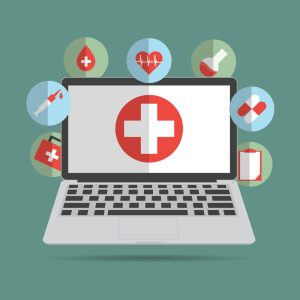





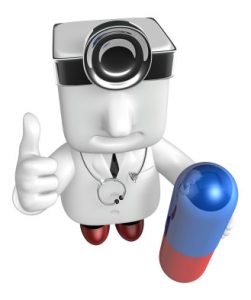





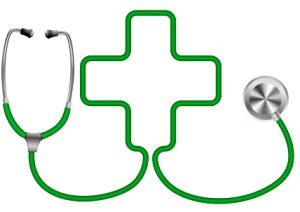


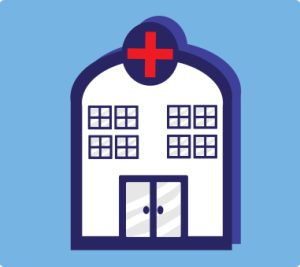













 Written by Victoria Maxwell
Written by Victoria Maxwell